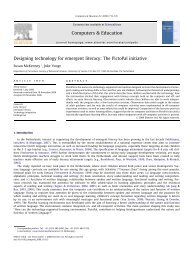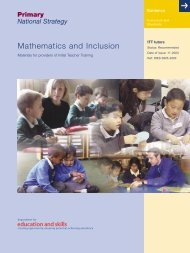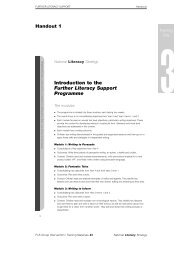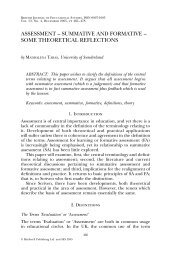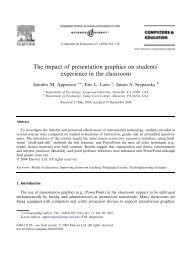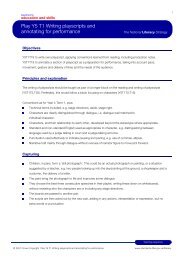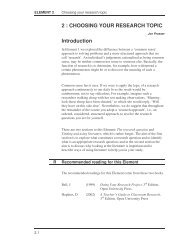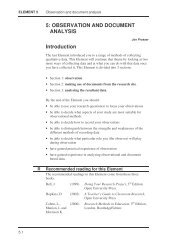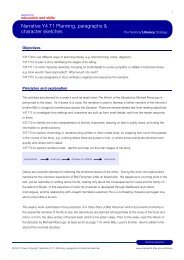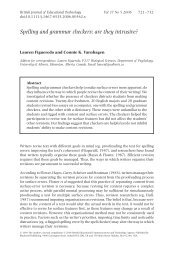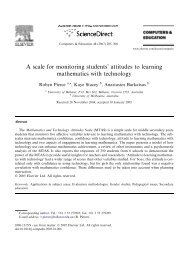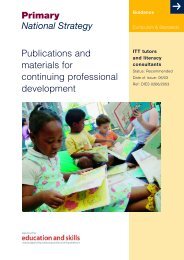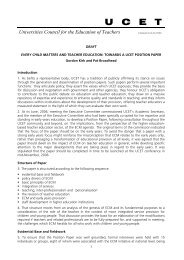Module 2: Written feedback - PGCE
Module 2: Written feedback - PGCE
Module 2: Written feedback - PGCE
You also want an ePaper? Increase the reach of your titles
YUMPU automatically turns print PDFs into web optimized ePapers that Google loves.
Ask participants to work in pairs. Allocate the examples between them<br />
according to numbers. Explain that they have 10 minutes for the task. It is not<br />
necessary to consider all the teacher comments in this time, but ensure variety.<br />
After 10 minutes take some <strong>feedback</strong> and use the key points on slide 4.2.5<br />
to summarise.<br />
Show slide 4.2.5.<br />
Slide 4.2.5<br />
Handout 4.2.2<br />
Ask participants to read handout 4.2.2 and briefly discuss with a partner and<br />
traffic-light those statements in terms of how they reflect their own practice (e.g.<br />
red – rarely, amber – often, green – typically).<br />
Make the following points.<br />
• It is important that <strong>feedback</strong> to pupils is related to their performance against<br />
the learning objective, not to the work of other pupils. If their performance is<br />
compared with that of other pupils it can lead to low self-esteem.<br />
• Pupils need to be shown they are on the right track. Comments like Your<br />
explanation about … is … are helpful.<br />
• Where pupils need to correct or develop their work it is important that the<br />
teacher provides the time for follow-up discussions and pupil action. A<br />
significant proportion of teacher comments in books say:<br />
– Complete this …<br />
– Re-draw the diagram!<br />
– Add in your ideas about …<br />
Rarely do pupils respond to these comments nor do the teachers check.<br />
Pupils can only respond to comments if they are given time to do so when<br />
the <strong>feedback</strong> the pupil has received is fresh in the mind.<br />
• Teachers should resist the temptation of giving the pupils the correct<br />
answers where there is a process that pupils can apply. In mathematics for<br />
example, it is easier to provide the answer to calculations rather than take<br />
pupils through the process of thinking the problem through.<br />
Continue by explaining the following.<br />
• Pupils often report that comments like try harder or be more logical are<br />
demoralising and do not match their own perception of the work. Such<br />
comments are often subjective. Focus on the specific learning objectives<br />
and outcomes.<br />
• Comments such as good work and well done or lots of ticks and merits may<br />
signify approval and can motivate pupils, but are not enough, as they do not<br />
5 Unit 4, <strong>Module</strong> 2: <strong>Written</strong> <strong>feedback</strong> © Crown copyright 2004



